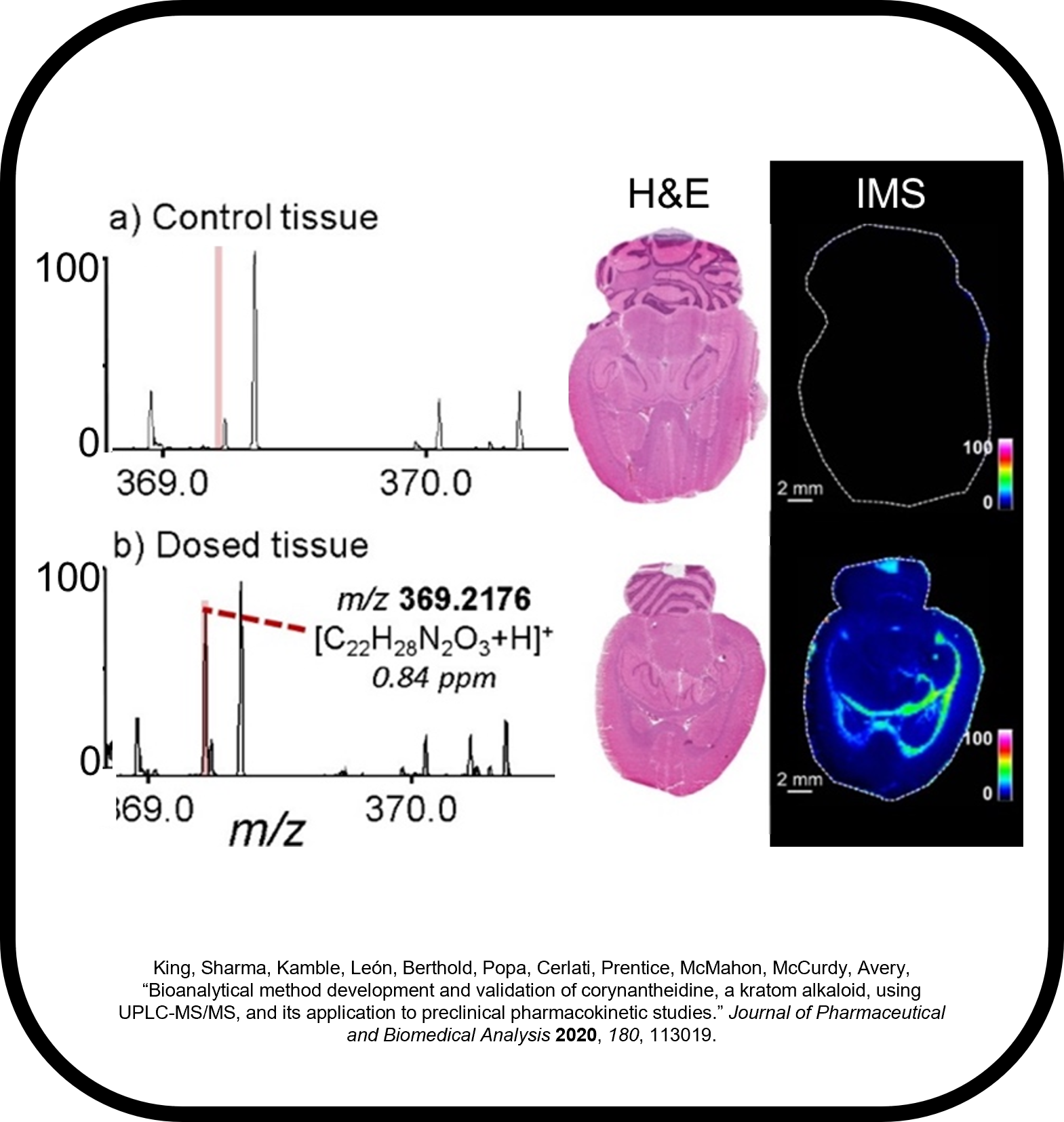Chronic pain affects an estimated 116 million Americans and opioid analgesics are now the class of medications most commonly prescribed to manage these conditions. Opioid physical dependence and addiction have resulted in the rate of death from overdoses quadrupling in the United States over the past 15 years, creating a Public Health Emergency. Natural products derived from Mitragyna speciosa (a member of the Rubiaceae family native to Southeast Asia and more commonly known as kratom) have emerged as self-prescribed alternatives to opioid use for the treatment of chronic pain and addiction. However, numerous recent reports have highlighted serious health affects linked to kratom use, including physical dependence, withdrawal, and even death. It is currently unclear which of the many alkaloid compounds present in kratom result in these health risks and which offer potential health benefits. Accurate pharmacological analysis of these materials and their interaction with neurological opioid receptors is critical to understanding the health risks and potential health benefits. This characterization requires both the discrimination between the many structurally similar drug and drug metabolites as well as knowledge of the spatial localization of these compounds in the brain, a challenge for conventional imaging methods. We are using imaging mass spectrometry to visualize the inter-brain distribution of kratom alkaloids along with the neurological opioid receptors to aid in understanding the pharmacological activities of these compounds.

Collaborators
Dr. Chris McCurdy, UF Transnational Drug Development Core – McCurdy Lab
Dr. Abhisheak Sharma, UF College of Pharmacy – Sharma Lab